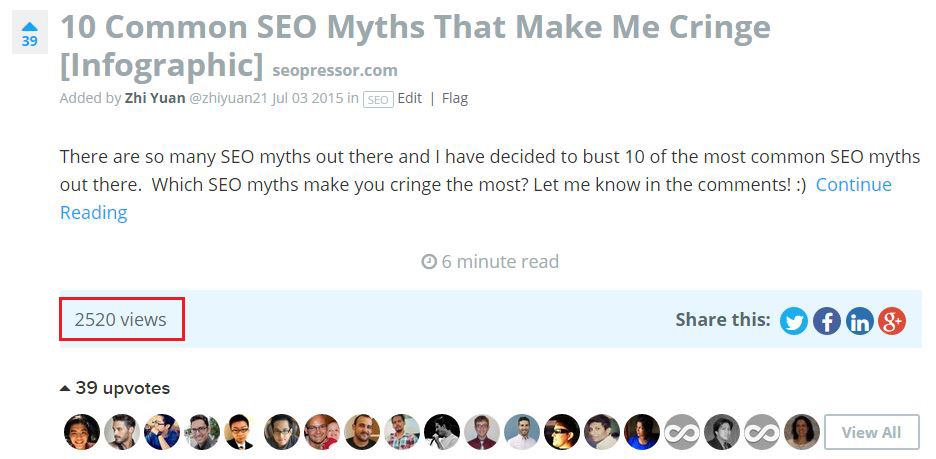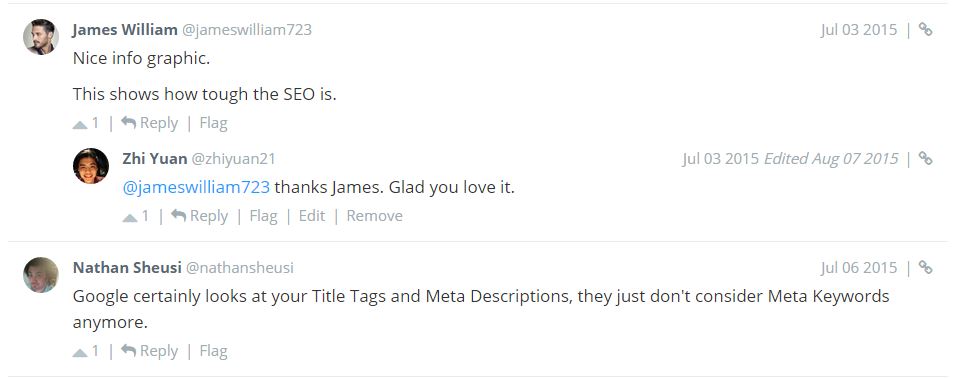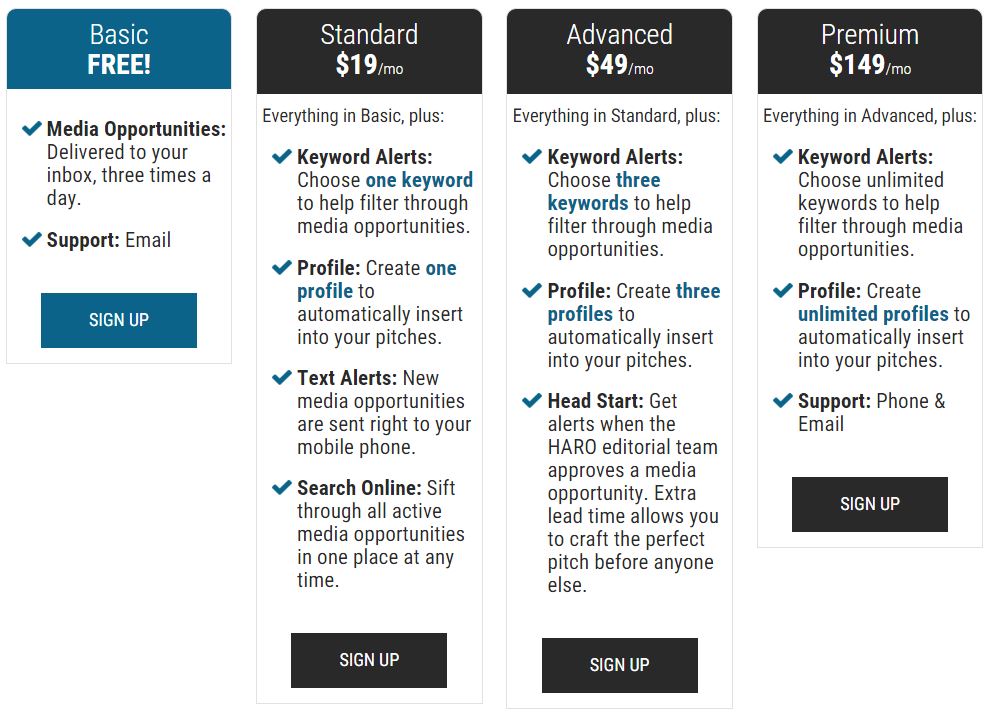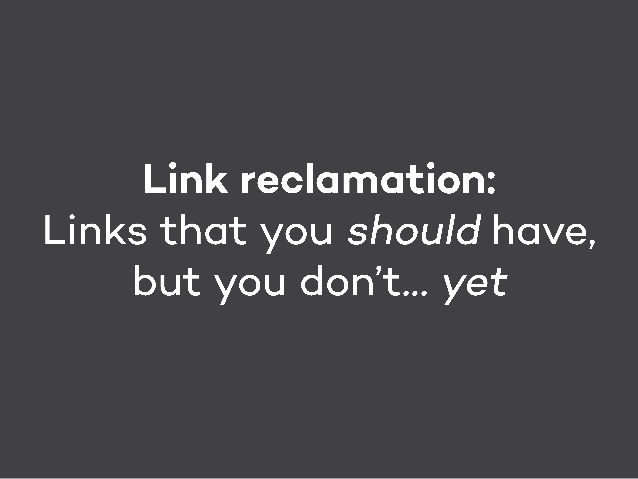1
Steph W. from SEOPressor


👋 Hey there! Would you like to try out this New AI-Powered App that'll...
...help you check your website and tell you exactly how to rank higher?


79
score %
SEO Score

Found us from search engine?
We rank high, you can too.
SEOPressor helps you to optimize your on-page SEO for higher & improved search ranking.
By winniewong on October 8, 2015

A backlink is a hyperlink from an external source that points to your page. And in the Internet Marketing and SEO world, backlinks are really important. Besides directing traffic to your site, dofollow links will also pass SEO juice to your site. Which means you’ll rank higher on search engine pages if you have many high quality backlinks directing to your site.
There are infinite ways to build backlinks, but not all link building strategies are worth doing. Some strategies such as link farming are illegal and will get your website penalized by Google, and some strategies just don’t bring in traffic at all.
So here I have compiled 7 of the best ways to build high quality backlinks that will actually bring traffic to your site.

People have questions – and websites like Quora, Yahoo, and various Subreddits are all dedicated to answering them. Take some time to create an account on each of these sites, then follow topics, questions, or subreddits that are relevant to your niche. From there, it’s fairly simple:
Step 2: Answer the question sincerely, using excerpts from your article. This is the most important step of the process – your goal should be to try and answer the question as directly and accurately as possible. This will inspire people to go read the rest of your answer – whereas if you only focus on promoting yourself, people will ignore you. Indeed, many Q&A sites have explicit rules about self-promotion that you’ll need to follow.
Step 3: Add a link to your article at the end of your answer. Readers should already gain some value and information from your topic, but they should also have the impression that your link will provide more information that’s worth their time to read. The articles you create should be written with this in mind.

Guest posting remains an excellent way of getting backlinks as long as the links are helpful and relevant. Google is very good at noticing spam links – thus, the more you focus on high quality content, the easier guest posting will be. However, keep in mind that guest-posting is a time-consuming process, and you’ll need to allow plenty of time for each post.
Step 2: Reach out to the blog’s owner and build a relationship. You can sign up to any newsletters they offer, follow them on social media, leave comments on their blog posts… don’t just be a business trying to promote yourself. In general, the more you give, the more you will get back.
Step 3: Ask to put up a guest post after establishing your relationship with them and demonstrating that you have things that are worth saying.
Step 4: Write an article that’s suitable for their existing audience. It should not be focused on self-promotion – instead, emphasize a relevant subject and your own stance upon it. The reader should finish the article and feel either entertained or educated.
Step 5: If allowed, drop a few links into the article. They don’t all need to point to you – links should be added in a natural way, and there can be some added value in linking to your site alongside credible or any other high-authority sources.
Step 6: Write an author profile for the post that has a link to your best opt-in page.
Now, you don’t want to spam these links – Google will recognize and penalize them, to say nothing of how quickly blog owners will delete them (though regular, organic comments will be fine).
Basically, links should only be posted alongside meaningful comments and on relevant topics. Google Alerts can help you identify good places to do this. Now, these links aren’t very helpful for improving your authority, but they do bring traffic, and especially appropriate links might even be edited into the main article.
Here’s Matt Cutts to affirm you that as long as you do not spam links on blog comments, only drop links organically, you’ll be fine and Google will not penalize you.
Step 2: Leave meaningful and valuable comments. Don’t simply say “Hey, great post” and then drop in a link – that’s spam. Instead, try focusing on an idea in the article, providing a nuanced and measured response, and wrapping up with a link to an article that continues your ideas and helps further explain why you feel the way you do. Remember, if you come off as both authoritative and intelligent, people are more likely to click. Your audience is the blog’s other readers, and they are the ones you should be writing for.

This one takes some effort, but it’s actually quite effective at getting new links. When you’re reading blogs, you can take the time to search for old, broken links that are dragging the blog down… and ask the blog’s owner to replace them with links to your own content. Most are willing to do so as long as your content is fresh and accurate.
Step 2: Use a Broken Link Checker to search for broken links within the blog. These may or may not exist – due to the nature of the internet, it’s basically impossible to predict how many there will be, but most blogs that have been around for a long time have some broken links.
Step 3: Alert the blog’s owner to the broken links and ask them to replace them with links to your own blog. Make this easy for them by showing them exactly which pages the broken links are on.
Blogging communities are another excellent way of getting noticed by people who are interested in reading blogs. Sites like Blog Engage, Inbound, GrowthHackers and Bizsugar all offer access to a wider community and can help you get a number of excellent links back to your blog.
Be sure to vet each site before you submit a blog post to it, though – remember, you don’t want to be associated with spam sites, and some blogging communities are precisely that.
Our personal favorite community to submit content to is Inbound.org. Inbound is a website that caters mainly to inbound marketers, which is in our niche and target audience.

I’ve generated more than 2k views just by sharing my post on this community!

I’ve also gotten many positive feedback from the community.

Step 2: Create a profile on the community and add some links back to your own page. Remember that links should give people a reason to follow them, not just be inserted in with no accompaniment. Nobody is ever going to click on your links unless they have a good reason to do so, and making sure you give them one is one of the most important parts of link-building.
Step 3: Start engaging with the rest of the blogging community. Consider things like upvoting certain posts, leaving comments, and starting new discussions. Obviously, what sorts of conversations you’ll be having depends on the nature of the community – some are far more professional in nature than others, and you’ll need to adjust accordingly.
Step 4: Post your own content and ask for feedback. Be sure to wait until you’re a truly established member of the community. Once you’re seen as “one of them”, it’s far easier to get people to click on your links and listen to what you have to say.
HARO, or Help A Reporter Out, is another great way to build quality backlinks from authoritative news sites.

They have plenty of options to choose from, but if you’re not sure about this, you can subscribe to their free basic plan first for a taste of what HARO is.
Step 2: Once you’ve subscribed to HARO, you’ll receive 3 emails daily from reporters asking for sources.

Here’s how Haro’s email look.
Step 3: Look for requests of sources that you could help with, reply them by stating your credentials and provide them with helpful tips.
Help a reporter out and get a top quality backlink. Simple.

This is the last method, and like #4, it’s often difficult to predict how many opportunities there will be. In essence, though, well-known blogs tend to get mentioned in various places without actually having links pointing back to them – which is inconvenient if you’re trying to bring new people in. Link Reclamation is how you fix this.
Step 2: Read through at least the first few pages of results. You’re looking for mentions of your site that do not have a link pointing to one of your pages (typically the front of your blog).
Step 3: Email whoever owns the site and ask them to put up a link to your blog.
By themselves, each of these strategies is only likely to get you a moderate amount of traffic. Taken together, however, you should be able to build up a significant number of high-quality backlinks that actually encourage people to click on them and read more of what you have to say. The better the links are, the more likely it is the people clicking them will ultimately choose to convert.
However, if you think that 7 ways to build quality backlinks are too little for you, you might want to check this list of 50 Ways To Build Quality Backlinks.
Finally, one last tip: Always create links for the person clicking on them. Don’t think about backlinks as a way of promoting your business – think about them as a way of helping the people who will be clicking on them. As long as you focus on other people, the traffic will come naturally – especially because this mindset will subtly influence your posts and make it clear that you’re trying to help.
Related Articles:
Updated: 19 April 2024

Gotcha.

Generate 5,000 words in under 5 minutes

Publish 100+ blog posts monthly

Rank in the Top 10 with SEO-optimized content

Drive 500K organic traffic
Rank in the Top 10 now with Longform AI
Save 67% today (As low as $14.69/mo)
